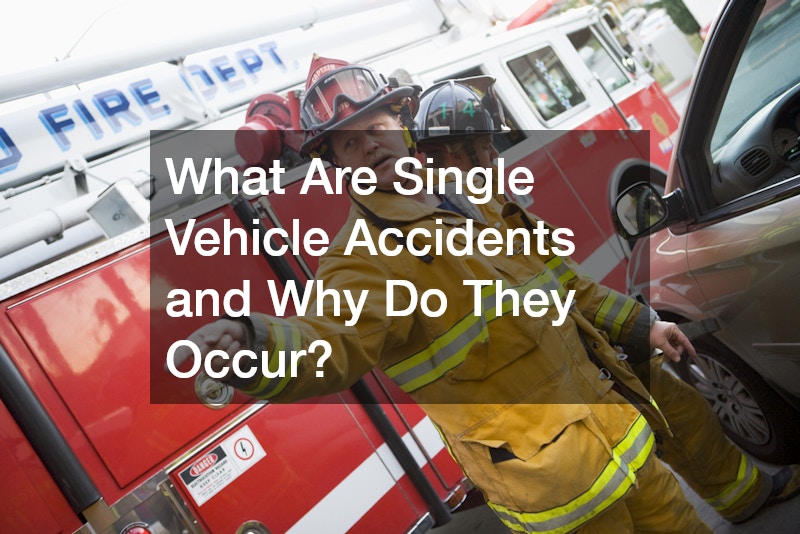
Single vehicle accidents are incidents that involve only one vehicle, often resulting in collisions with stationary objects or off-road excursions. Although they don’t involve other vehicles, these accidents are far from simple. They can lead to serious injuries, costly repairs, and complex legal and insurance issues. This article will cover the nature of single vehicle accidents, common causes, legal implications, preventive measures, and their overall impact on road safety. By understanding these factors, drivers can make better decisions to prevent such incidents.
1. What Defines a Single Vehicle Accident?
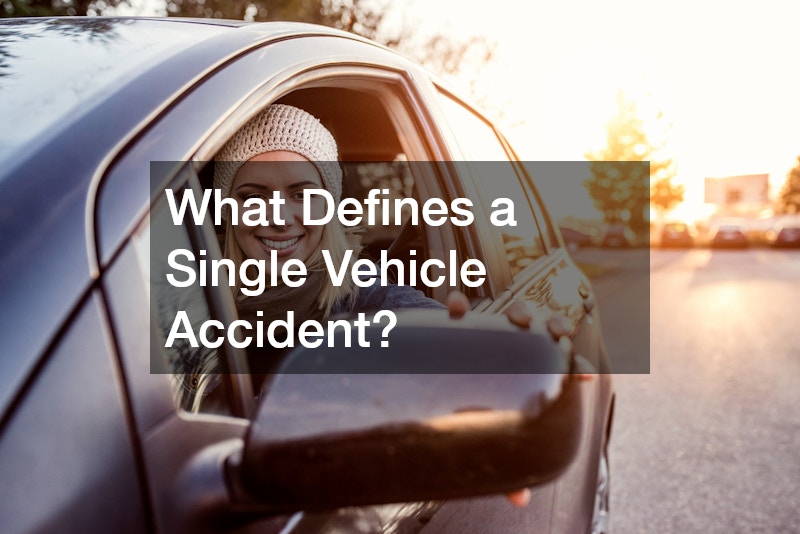
A. Overview of Single Vehicle Accidents
Single vehicle accidents involve a single car, truck, or motorcycle crashing into an object or veering off the road. Common situations include a driver losing control and hitting a tree, guardrail, or another stationary object. While often viewed as preventable, these accidents frequently happen under adverse conditions, such as in poor weather or low visibility, or when a driver has to react suddenly to avoid wildlife or debris on the road.
B. Common Characteristics
Many single vehicle accidents occur at night or on rural roads where conditions are less predictable. Common characteristics include skidding, swerving, or abrupt stops, which can cause injury to the driver and passengers. Accidents are often severe because the driver lacks protective barriers typically provided by surrounding vehicles in multi-vehicle accidents.
C. Legal Definitions
Legally, a single vehicle accident is defined as any incident where a single driver is responsible for an accident involving only their vehicle. This has specific implications for insurance and liability since the driver is often considered at fault unless other factors, like severe weather or road hazards, play a role.
D. Differences from Multi-Vehicle Accidents
Single car accidents differ from multi-vehicle accidents in that they involve only the driver’s actions and the road environment. However, they can be just as severe, leading to similar injuries, damages, and insurance complications. Multi-vehicle collisions, on the other hand, involve interactions between multiple drivers, making fault determination more complex.
E. Examples and Case Studies
A typical example might involve a car swerving to avoid an animal, leading to a collision with a tree. Such incidents are common in areas with high wildlife activity or challenging terrains, where obstacles are unpredictable. Case studies highlight that while these accidents may seem isolated, they are frequent and costly, requiring drivers to maintain alertness and preparedness.
2. How Common Are Single Vehicle Accidents?
A. Statistical Data
Studies show that single car accidents account for nearly one-third of all fatal road incidents. Given that they don’t involve multiple vehicles, they often fly under the radar, but their frequency is a serious concern for road safety professionals and policy-makers.
B. Comparison with Other Types of Accidents
While multi-vehicle accidents receive more media attention, single vehicle accidents account for a substantial portion of road fatalities. They frequently lead to severe injuries, particularly when the driver’s vehicle hits a hard object or rolls over.
C. Trends Over Time
Although overall accident rates have dropped with improvements in car safety and technology, single vehicle accident rates remain a concern, especially in rural and suburban areas with challenging road conditions.
D. Regional Variations
Single vehicle accidents are more common in certain regions, especially rural areas or locations with high wildlife populations and challenging road conditions. Road design also plays a role, with narrower roads and lack of barriers increasing the risk.
E. Impact on Road Safety
The high frequency of one vehicle accidents highlights the need for improved road safety measures, including road design adjustments, better lighting, and driver education initiatives that emphasize safe driving techniques.
3. What Are the Main Causes of Single Vehicle Accidents?
A. Driver Error
Driver error, such as distractions from mobile devices, fatigue, or impaired driving, is one of the leading causes of single car accidents. Inattentive drivers may miss critical cues on the road, leading to loss of control and subsequent crashes.
B. Weather Conditions
Poor weather conditions, like rain, snow, fog, and ice, significantly contribute to single vehicle accidents by reducing visibility and traction. Drivers unprepared for these conditions may lose control more easily, increasing the likelihood of accidents.
C. Road Conditions
Potholes, debris, and uneven surfaces create hazardous conditions, especially at high speeds. Drivers encountering unexpected obstacles may swerve or brake abruptly, resulting in a loss of control and an accident.
D. Vehicle Malfunctions
Vehicle malfunctions, such as brake failure or tire blowouts, also contribute to single car accidents. Regular car maintenance, including brake repair, tire checks, and other routine services, can reduce the risk of mechanical failures on the road.
E. Wildlife and Obstacles
Wildlife crossing the road or unexpected obstacles, like fallen branches, often lead drivers to swerve suddenly, which can cause them to lose control of the vehicle. Single car accidents are especially common in rural areas where animals frequently cross the road.
4. Are Certain Vehicles More Prone to Single Vehicle Accidents?
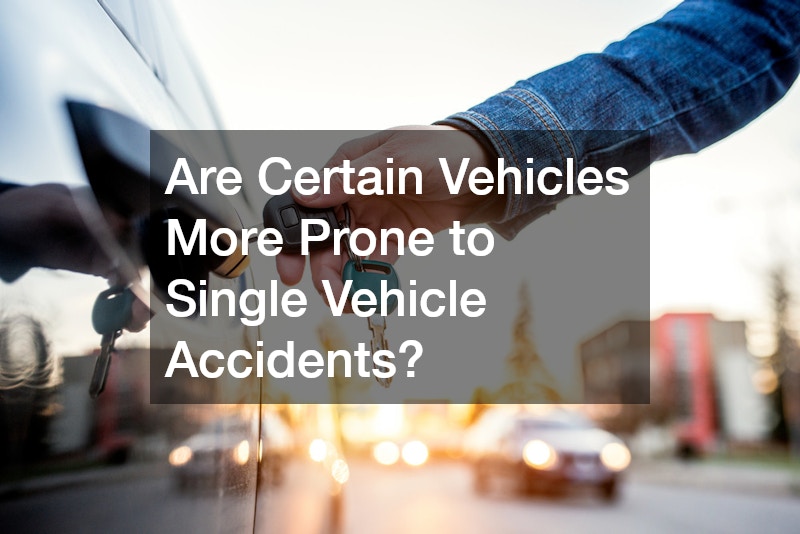
A. Vehicle Types and Designs
Certain vehicle types, like motorcycles, are more vulnerable to single vehicle accidents due to their limited stability and lack of protective structure. The inherent instability makes them more susceptible to road hazards.
B. SUV and Truck Considerations
SUVs and trucks are prone to rollover accidents, a common type of single vehicle accident, particularly when drivers take sharp turns or drive at high speeds. Their higher center of gravity increases rollover risk in sudden maneuvers.
C. Motorcycle Vulnerabilities
Motorcycles are particularly vulnerable due to their open design and limited stability. Motorcycle riders are at a higher risk of injury or fatality in single vehicle accidents, as they lack the physical protection that enclosed vehicles offer.
D. Age and Maintenance of Vehicles
Older vehicles or those with poor maintenance records are more likely to experience mechanical issues that contribute to single vehicle accidents. Regular maintenance, including tire repairs and brake checks, is essential for safe driving.
E. Technological Impact
Technological advances, such as stability control systems and advanced driver assistance features, have reduced the likelihood of single vehicle accidents by helping drivers maintain control even in adverse conditions.
5. How Can Drivers Prevent Accidents?
A. Safe Driving Practices
Drivers can prevent single vehicle accidents by practicing safe driving habits, including obeying speed limits, avoiding distractions, and not driving under the influence. Each Driving lesson should focus on defensive driving can also help drivers anticipate hazards.
B. Vehicle Maintenance Tips
Regular vehicle maintenance is key to preventing single vehicle accidents caused by mechanical failures. Services like brake repair, tire maintenance, and general car upkeep are crucial for reducing the risk of malfunctions that lead to accidents.
C. Adapting to Weather Conditions
Drivers should adjust their speed and driving style in response to weather conditions, such as slowing down on wet or icy roads. Awareness and caution can prevent many weather-related single vehicle accidents.
D. Road Awareness Techniques
Staying alert to road conditions, potential obstacles, and wildlife can help drivers avoid sudden maneuvers that might result in a crash. Driver training that emphasizes road awareness is beneficial in minimizing risks.
E. Advanced Driver Assistance Systems
Advanced safety features, such as lane-keeping assist, collision avoidance, and traction control, can help drivers avoid accidents by automatically adjusting the vehicle’s movements to prevent loss of control.
6. What Are the Legal Implications of Vehicle Accidents?
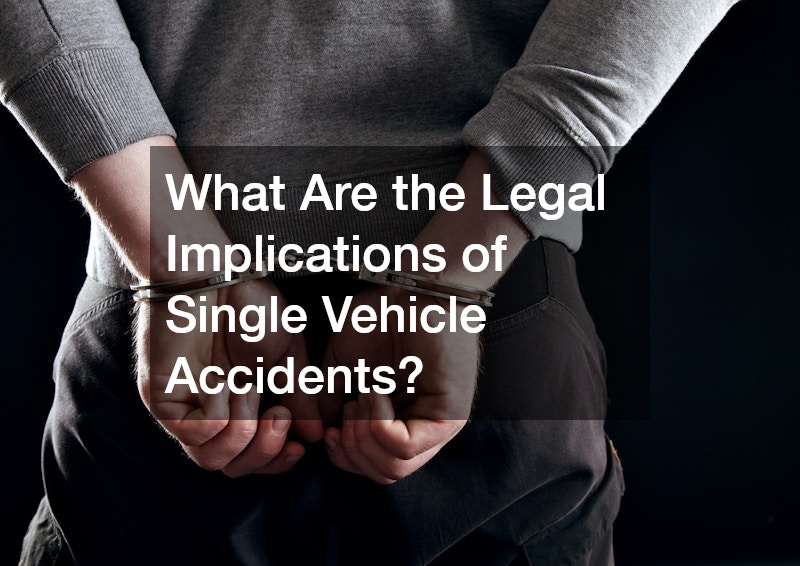
A. Determining Fault
In most single vehicle accidents, the driver is deemed at fault, as there are no other parties involved. However, factors like poor road conditions or defective vehicle parts can sometimes shift liability away from the driver.
B. Insurance Challenges
Single vehicle accidents often result in complications with insurance. Since the driver is usually deemed at fault, claims can be challenging to negotiate. A car accident lawyer can assist in cases where there’s dispute over fault or insurance compensation.
C. Legal Representation
Legal representation can be critical in single vehicle accident cases, especially when the driver believes other factors contributed to the accident. A car accident lawyer can help drivers navigate legal complexities and ensure fair treatment.
D. Impact on Driving Record
A single vehicle accident can negatively impact a driver’s record, leading to potential increases in insurance premiums and affecting eligibility for certain coverage.
E. Liability for Damages
In single vehicle accidents, the driver is generally liable for all damages. This financial responsibility can be substantial, particularly if significant auto repair or medical expenses are involved.
7. How Do Single Car Accidents Affect Insurance Rates?
A. Insurance Policy Considerations
Insurance policies often include specific conditions for single vehicle accidents. Drivers should understand their auto insurance coverage and know which scenarios are covered to avoid unexpected financial burdens.
B. Rate Increases and Risk Assessment
A single vehicle accident is typically considered high-risk behavior by insurers, resulting in premium increases. Many providers consider these accidents an indicator of poor driving habits.
C. Claims Process
The claims process for single vehicle accidents can be complex, with insurers scrutinizing claims closely to determine fault. Having clear documentation and understanding one’s auto insurance coverage can simplify this process.
D. Avoiding Coverage Cancellation
Multiple single vehicle accidents on a driver’s record may lead to coverage cancellation. Practicing safe driving and avoiding risky behavior is essential for maintaining affordable insurance rates.
E. Insurance Discounts for Safe Driving
Many insurers offer discounts to drivers with clean records and no accidents. Avoiding single vehicle accidents by practicing safe driving can make drivers eligible for these discounts.
8. What Should a Driver Do Immediately After a Vehicle Accident?
A. Ensuring Safety First
The driver’s first priority should be safety. Moving to a secure location, if possible, and checking for injuries can prevent further harm. Roadside service assistance can be valuable in these situations.
B. Contacting Emergency Services
If injuries occur, emergency services should be contacted immediately. For minor accidents, calling a towing company to safely move the vehicle off the road is often necessary.
C. Documenting the Scene
Documentation, including photos and notes, is crucial for insurance claims and legal matters. This evidence can be essential if fault or coverage is disputed.
D. Notifying Insurance
Drivers should notify their insurance company as soon as possible to begin the claims process and provide details of the accident.
E. Seeking Legal Advice
For complex cases, seeking legal advice from a car accident lawyer can help drivers navigate insurance claims and potential liability issues.
9. How Do Weather Conditions Influence Accidents?
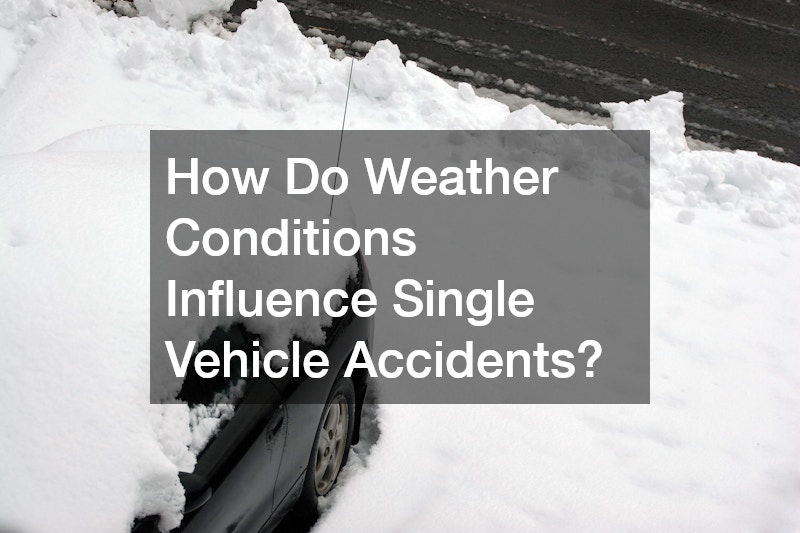
A. Impact of Rain and Fog
Rain and fog reduce visibility and make roads slippery, increasing the likelihood of single vehicle accidents. Drivers should slow down and use fog lights in these conditions.
B. Driving in Snow and Ice
Snow and ice make roads extremely hazardous. Drivers must exercise caution, reduce speed, and avoid sudden movements to prevent accidents.
C. Adapting to Extreme Weather Conditions
Adaptability to weather changes is essential. Drivers should check weather forecasts and avoid driving in extreme conditions when possible.
D. Seasonal Variations
Winter and autumn see a spike in single vehicle accidents due to icy roads and low visibility. Drivers should be extra cautious during these seasons.
E. Predictive Weather Technologies
Modern vehicles equipped with predictive weather technologies can alert drivers to potential hazards, helping to reduce weather-related accidents.
10. What are the Psychological Effects of Being in a Motor Vehicle Accident?
A. Immediate Emotional Reactions
Shock, anxiety, and guilt are common immediate responses to single car accidents. Recognizing and addressing these feelings is vital for recovery.
B. Long-term Psychological Impact
Some individuals experience long-term psychological effects, like PTSD, after severe accidents. Professional support may be necessary for these cases.
C. Coping Strategies
Engaging in relaxation techniques, talking with friends and family, and practicing mindfulness can aid in coping with the emotional impact of an accident.
D. Therapy and Support Groups
Therapy and support groups provide a safe space for individuals to process their experiences and receive support from those in similar situations.
E. Preventive Measures for Mental Health
Proactively addressing mental health by seeking support after an accident can reduce the risk of long-term emotional effects.
Single vehicle accidents are significant events that carry serious implications for physical, legal, and psychological well-being. By understanding the causes, legal challenges, and preventive measures, drivers can reduce the risk of these incidents. Whether it’s through careful car maintenance, practicing safe driving habits, or knowing when to seek back pain relief after an accident, awareness is key. Road safety efforts aimed at reducing single vehicle accidents will benefit drivers and contribute to a safer driving environment for everyone.
